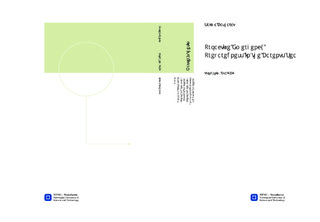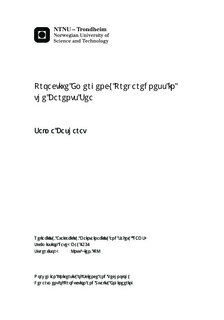| dc.description.abstract | Today rise in oil and gas demand, energy crisis, issues concerning energy security and increase in oil prices in the world provoke further exploration and production of oil and gas. The Arctic Sea is the last frontier of abundant hydrocarbon reserves. Having effective regulations, innovative technologies and adequate safety norms, the world has still seen some major accidents such as Gulf of Mexico accident. Knowing that offshore petroleum industry is moving further north in Arctic poses additional challenges due to harsh climatic conditions and remoteness from existing oil and gas infrastructure. The objective of this thesis is to provide an overview of offshore petroleum activity in arctic and sub-arctic areas as well as the accidents which took place in these areas. Furthermore, the accidents are analyzed with respect to the emergency preparedness handling of accidents using the NORSOK Z-013 standard as one basis. The thesis also discusses the anticipated emergency preparedness challenges for arctic and sub-arctic areas. The Arctic Sea is the final destination in the north having enormous amount of hydrocarbons. The harsh weather conditions of the Arctic Sea characterized by polar lows, long nights, extreme fog and sub-zero temperatures have not prevented the countries bordering the Arctic Sea in exploiting the oil and gas resources. Russia, having extended pipeline infrastructure, has the most active part in the Arctic region followed by the US and Norway. The offshore exploration and production activities in the Canadian and Greenland Arctic Sea are gradually progressing. Up to date, there have been very few accidents in the Arctic Sea thereby providing a limited knowledge base for emergency response in the Arctic Sea. The accidents which we have been able to account for are mainly related to blowout, pipeline leak, ship collision and capsize accidents. The accidents have occurred in the Russian Arctic Sea and the Alaskan Arctic Sea.The NORSOK Z-013 standard refers to alert, danger limitation, rescue, evacuation, and normalization as the five emergency preparedness phases and their detailed description is available in the Activities Regulation by the Petroleum Safety Authority in Norway (PSAN). It is stated in the NORSOK Z-013 standard that a set of Defined Situation of Hazard and Accident (DSHA) needs to be defined as part of the risk and emergency preparedness analysis. The set of DSHAs provided in the Trends in risk level project is used in this thesis for the classification and analysis of the accidents in the Arctic Sea.The analysis of the accidents in the Arctic Sea shows that all the emergency operations went through the phases of alert and normalization while the oil spill related accidents did not pass through escape and evacuate operations as there were no personnel involved in these accidents. All the emergency operations were affected by bad and tough weather conditions. Advanced emergency preparedness tools, equipment and technology are needed for effective emergency operations under such conditions. Due to scarcity of accidents in the Arctic Sea, only four DSHAs (out of 12) have been experienced, or at least reported. It may be that some of the remaining DSHAs are not reported due to minor consequences. In addition to the lessons learned from the emergency response operations for the accidents experienced in the Arctic Sea, there are also some emergency preparedness challenges which can be anticipated. The challenging weather conditions due to sudden polar lows, strong winds, spray icing, snowstorms and severe fog can hamper the emergency operations. Furthermore, long distances and lack of infrastructure can create communication and logistic problems and can result in delay of rescue and evacuation operations. Robust and reliable ice and weather data is a challenge due to global warming and may become a limiting factor for the adequate design of offshore equipment. The use and maintenance of emergency response equipment is also a challenge in sometimes dark, snowy and foggy areas of the Arctic Sea and the Barents Sea. | nb_NO |

